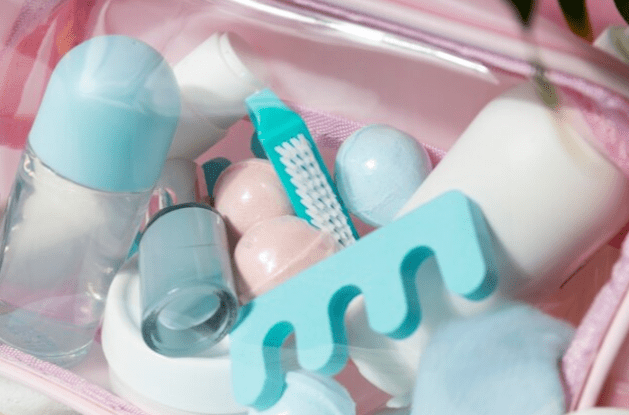Childproofing is an essential step when it comes to providing a safe and secure environment for young children, especially toddlers and babies. It’s about making the house a haven where curiosity doesn’t result in mishaps. The method involves making deliberate changes to protect children from hazards across the living area. A standard childproofing kits consists of various safety instruments and gadgets designed to lock down potentially dangerous objects and spaces in the house.
These could be outlet covers to stop electrical accidents, corner guards for furniture with sharp edges, locks for cabinets holding dangerous materials, and more. Any caregiver or parent should realize how vital childproofing is. The goal is to create a proactive workplace where the inherent hazards are significantly reduced, not only to install safety measures. This article will discuss the importance of childproofing, go over the necessary items for a kit, and offer helpful tips on how to successfully secure your house so that it’s a safer place for learning and development.
Recognizing the Need for Child Safety Measures

Children’s natural curiosity and urge to investigate their environment grow as they age. Although this curiosity is essential to their growth, it may also get children into hazardous circumstances. For young children, everyday household products and areas might be dangerous places that adults take for granted. Children may come into contact with hazards such as electrical outlets, sharp corners, stairs, and household chemicals.
By limiting access to potentially dangerous areas or creating a safer environment, childproofing kits aim to reduce the likelihood of mishaps and injuries. This gives parents and guardians peace of mind in addition to aiding in the child’s safety.
Crucial Items in a Childproofing Kits
A complete childproofing kits comprises a variety of safety measures and covers multiple sections of the house. Here are a few of the crucial elements:
Safety Latches and Locks: It is essential to use safety latches and locks to lock cabinets and drawers that hold potentially dangerous materials, sharp objects, or delicate goods. They successfully keep kids away from harmful content, making the environment safer. Conveniently sized to provide adults quick access while protecting small children from injury. These are essential components of any childproofing plan.
Corner & Edge Bumpers: These cushioned, soft guards can be fastened to the furniture’s sharp corners and edges to stop accidents and injuries from falls.
Outlet covers: Keeping unused electrical outlets covered assists in preventing electrical shock. Additionally, some models have a sliding mechanism that enables momentary access when required.
Door locks and Door Knob Covers: Keep kids from accessing doors to forbidden spaces like restrooms, basements, or any other room that can be dangerous.
Window Guards and Safety Netting: Designed to prevent people from falling out of balconies, stairs, or windows.
Anti-scald devices: These can be mounted on showerheads and faucets to control water temperature and avoid burns.
Furniture and Appliance Anchors: These fasten large, heavy furniture and appliances to the wall so a youngster cannot attempt to climb and tip them over.
Toilet locks: By preventing access to the toilet, they lower the chance of drowning and deter kids from tossing stuff into the bowl.
To lower the risk of strangling, use cord shorteners or wraps to manage the cords on blinds and drapes.
A Complete How-To for Childproofing Your House
Childproofing is a continuous procedure that adjusts to the child’s development and environmental changes rather than a one-time event. Here’s how to successfully childproof your house step-by-step:
Make a Risk Assessment: Take a child’s eye to spot possible dangers as you walk through your house. To identify hazards you would miss otherwise, get down on their level.
Use Stove Knob Covers: Install safety latches on cupboards and drawers, and keep all sharp objects and dangerous materials out of reach to secure the kitchen.
Use Non-Slip Mats: Anti-scald devices and toilet locks to keep bathrooms safe. Store cleaning supplies, razors, and medications in locked drawers.
Living Areas: Hide electrical cords, anchor TVs, and large furniture, and give furniture corner and edge bumpers.
Bedrooms: Use window guards, ensure cribs adhere to current safety regulations, and keep small items and choking risks out of reach.
Windows and staircases:
Utilize window guards.
Install safety gates at the top and bottom of staircases.
Make sure all railings are safe and do not provide room for a child to fall through.
Electrical Safety: Advice includes securing unsecured wires and using outlet covers on all unused outlets.
Check for Recalls: Continually verify whether any kid-friendly products or childproofing tools have been the subject of a recall.
Keeping Your House Childproof

Maintaining the effectiveness of childproofing initiatives requires regular upkeep. It’s crucial to check gates, locks and latches regularly to ensure everything operates as it should. Children may learn to get around the first safety precautions as they mature and acquire new abilities. Therefore, remaining watchful and prepared to modify your childproofing techniques is crucial. Not only must protection be installed, but it must also be continuously monitored and updated to keep up with your child’s developing skills and curiosities.
In Conclusion
To ensure your child’s security and welfare, childproofing should be a daily routine rather than an occasional task. A complete childproofing kits in your home is essential if you’re a parent or guardian and want to ensure your children can play and develop safely. If you utilize the appropriate safety equipment, are entirely aware of the potential risks, and routinely assess and enhance your safety precautions, the likelihood of an accident will be significantly reduced.
One of the most crucial things you can do to keep your children safe is to maintain a clean and orderly home but bear in mind that these safety precautions can only be applied with extreme caution. The most crucial thing you can do to keep your child safe is to give them excellent care. Your safety strategies should be adapted to keep kids safe as they become older and wiser. This allows your children the freedom to learn and develop in a supportive and safe atmosphere while also keeping them safe.
We hope you found this information helpful in creating a safer environment for your family. At GuardWell Safety, we understand that every home is unique, as are your child-proofing needs. That’s why we offer a Free Child-Proofing Consultation tailored to your requirements. Let our experts help you identify potential hazards and provide personalized solutions to make your home a secure haven for your little ones. Book your free consultation today and take the first step towards peace of mind.






